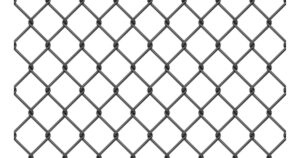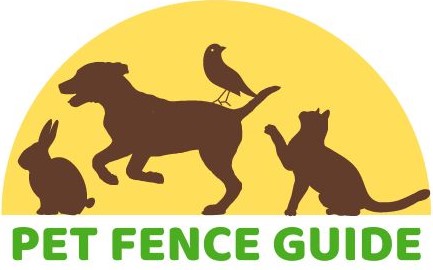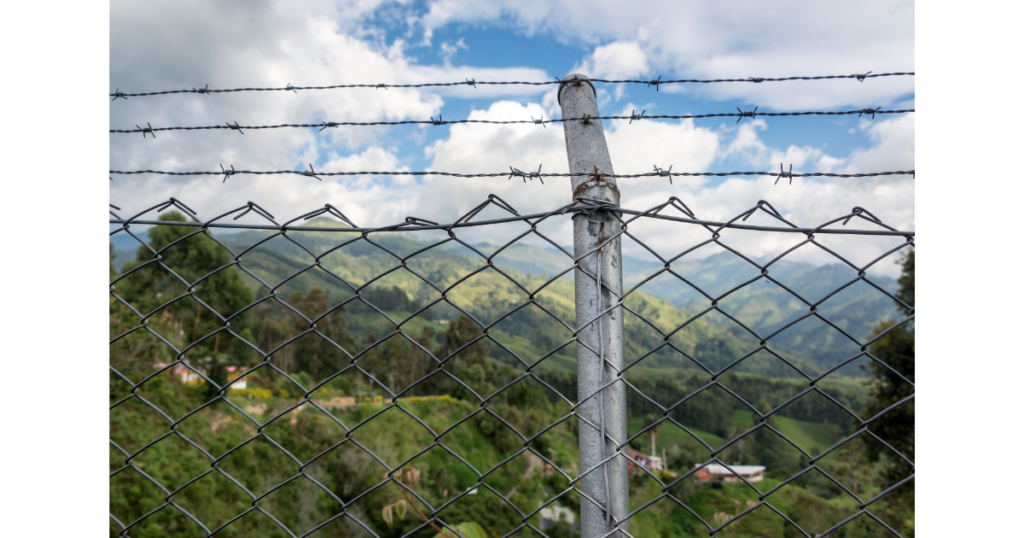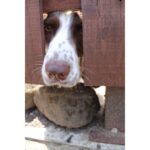What Gauge Wire For Dog Fence is the topic of our today’s article. Keeping our furry companions safe within the bounds of our property is a top priority for any responsible dog owner. However, selecting what gauge wire for a dog fence is a critical decision that can significantly impact the system’s performance and ultimately, your pet’s safety.
With the advancements in technology, dog fences have become an increasingly popular and effective way to ensure our pets stay within designated areas while still enjoying their freedom. If selected the right wires for your fence system not only saves your dog. It also impacts long-term cost savings and the effectiveness of the fence system.
In this comprehensive guide, we will explore the various aspects of selecting the appropriate gauge wire for your dog fence.

1. Understanding Wire Gauges and Their Significance
Table of Contents
ToggleWire gauge refers to the thickness of the wire and is measured using the American Wire Gauge (AWG) system. Smaller gauge numbers indicate thicker wires, while larger gauge numbers represent thinner wires. When it comes to dog fences, the gauge of the wire plays a crucial role in determining the fence’s effectiveness and reliability.
2. Commonly Used Wire Gauges for Dog Fences
For dog fence installations, wire gauges typically range from 14 AWG to 20 AWG. Each gauge has its pros and cons, and the choice depends on various factors such as property size, terrain, and the type of containment system being used.
3. Factors to Consider When Selecting What gauge wire for dog fence?
Before making a decision, several important factors should be taken into account:
a) Property Size and Layout: Larger properties with extensive boundary lines may require thicker wire to maintain a consistent signal over longer distances, ensuring a reliable containment area.
b) Wire Resistance: Thicker wires (lower gauge) have lower electrical resistance, which means they can carry the signal more effectively, reducing the risk of signal loss and providing a stronger boundary signal.
c) Wire Durability: Thicker wires are generally more durable and can withstand environmental factors, such as temperature fluctuations and moisture, better than thinner wires.
d) Signal Strength and Range: Thicker wires can carry the signal over longer distances, allowing for a more expansive containment area. This is particularly crucial for large properties.
4. Pros and Cons of Different Wire Gauges
a) 14 AWG Wire:
- Pros: Suitable for large properties, lower resistance for longer distances, more durable, less prone to breakage.
- Cons: More expensive than thinner gauges, harder to work with due to their thickness.
b) 16 AWG Wire:
- Pros: Ideal for medium to large-sized properties, easier to work with compared to 14 AWG, offers a good balance of durability and signal transmission.
- Cons: Slightly higher resistance than 14 AWG, which may limit the range in extensive properties.
c) 18 AWG Wire:
- Pros: Suitable for smaller properties with limited boundary lines, more affordable than thicker gauges, and easier to work with.
- Cons: Higher resistance can cause signal degradation over long distances, not ideal for large properties.
d) 20 AWG Wire:
- Pros: Most affordable option, suitable for very small areas or temporary installations, easy to work with and install.
- Cons: Highest resistance among the gauges, limited signal transmission range, not recommended for large or permanent installations.

5. Installation Tips for Dog Fence Wire
Regardless of the wire gauge you choose, proper installation is crucial for the overall effectiveness of the dog fence system:
a) Burying the Wire: To protect the wire from damage caused by external factors, it’s recommended to bury it underground. The depth of burial should be between 1 to 3 inches, keeping it safe from lawnmowers and digging.
b) Planning the Boundary: Carefully plan the boundary layout to ensure the wire covers all areas you want to include or exclude. Avoid sharp bends or kinks in the wire, as they can interfere with signal transmission.
c) Avoiding Signal Interference: Keep the boundary wire at least 6 to 10 feet away from metal objects, other electrical wires, and large appliances to avoid signal interference.
6. Can I Use Regular Electrical Wire for a Dog Fence?
Using regular electrical wire is not recommended for dog fences. Dog fence wire is specially designed to withstand environmental factors like moisture, soil acidity, and temperature fluctuations, making it more durable and suitable for long-term outdoor use. Regular electrical wire lacks the necessary insulation and durability needed for a dog fence system and may result in signal issues or damage over time.
7. Upgrading or Replacing Wire in an Existing Dog Fence
If you have an existing dog fence and are considering upgrading or replacing the wire, it’s essential to choose a wire with the same gauge as the original installation. Mixing wire gauges can cause signal inconsistencies and may render the system ineffective. If you’re unsure about the current gauge of your wire, it’s best to consult the manufacturer or a professional installer before making any changes.
8. Weatherproofing and Wire Protection
To ensure the longevity and reliability of your dog fence wire, consider using weatherproofing and wire protection accessories. Weatherproofing gel-filled capsules can be applied to the wire connections to protect them from moisture, while wire casings or conduits can shield the wire from potential damage in high-traffic areas.
Conclusion

Selecting the right gauge wire for your dog fence is a decision that requires careful consideration. Thicker wires like 14 AWG and 16 AWG are recommended for larger properties to ensure consistent signal transmission over longer distances. For smaller properties, 18 AWG or 20 AWG may suffice. Proper installation, adherence to manufacturer guidelines, and regular maintenance will ensure the effectiveness and safety of your dog fence system, providing your furry friend with the freedom to explore while staying secure within the boundaries of your property. Always remember that investing in a high-quality dog fence system with the appropriate gauge wire is an investment in your pet’s safety and well-being.
Frequently Asked Questions?
What Gauge Wire is Best for a Dog Fence? – 8 FAQs Answered
Keeping your furry friend safe and secure within your property is a top priority for any dog owner. One of the most effective ways to achieve this is by installing an underground dog fence. However, choosing the right gauge wire for your dog fence is crucial to ensure the system functions optimally and provides reliable containment for your pet. In this article, we’ll address 8 frequently asked questions about selecting the appropriate gauge wire for a dog fence.
FAQ 1: What is the gauge of wire commonly used for dog fences?
The most commonly used gauge for dog fences is 14 to 20 AWG (American Wire Gauge). The lower the gauge number, the thicker the wire. Among these options, 14-gauge and 16-gauge wires are more popular due to their durability and ability to handle long-distance installations without significant signal loss right dog fence wire.
FAQ 2: How does wire gauge affect the performance of a dog fence?
Wire gauge directly impacts the performance of a dog fence system. Thicker wires (lower gauge numbers) offer lower resistance to the flow of the signal, allowing the transmitter to deliver a consistent signal throughout the fence. Thinner wires (higher gauge numbers) have higher resistance, which may result in signal degradation over long distances, potentially leading to unreliable boundaries for your pet.
FAQ 3: Is it better to use a thicker wire for larger properties?
Yes, for larger properties, it’s generally better to use thicker wire to maintain signal integrity and prevent signal loss. As the property size increases, the distance between the transmitter and the receiver collar also increases. Thicker wires, such as 14-gauge, are better equipped to handle this distance without compromising the effectiveness of the dog fence system.
FAQ 4: Can I use a thinner wire for smaller areas?
Using a thinner wire, like 20 gauge, can be acceptable for smaller areas. However, it’s essential to consider the power output of the transmitter and the distance from the boundary wire to ensure it can still create an effective containment area to choose the. If the wire is too thin, the signal might not reach the intended boundary, leaving your pet with insufficient containment.
FAQ 5: How deep should I bury the dog fence wire?
The dog fence wire should be buried at a depth of 1 to 3 inches (2.5 to 7.6 centimeters). Burying the wire at this depth helps protect it from potential damage caused by lawnmowers, digging, or other landscaping activities. Shallower installations may lead to accidental wire exposure, while deeper placements may cause signal interference or weaken signal strength.
FAQ 6: Can I use any type of wire for a dog fence?
While it may be tempting to use any wire you have on hand, it’s best to use specifically designed dog fence wire and choose the right dog fence. The wire used for dog fences is usually insulated and designed to withstand environmental factors like moisture and soil acidity. Ordinary wires, like those used for electrical purposes, might not provide the same durability and signal transmission needed for an effective dog fence system.
FAQ 7: Are there any factors other than gauges that can affect the performance of the dog fence?
Yes, several factors can influence the performance of a dog fence system, including the type of transmitter and receiver collar, the distance between the transmitter and the boundary wire, and any obstacles or interference along the boundary line. Proper installation, regular maintenance, and ensuring the collar is fitted correctly on your dog are also crucial for optimal performance.
FAQ 8: Can I install the dog fence wire above the ground?
While burying the wire is the recommended installation method best wire for underground, you can install the wire above ground in some cases. However, above-ground wires are more vulnerable to damage from external elements and pose a tripping hazard. If you must install the wire above ground, secure it with staples or clips, and consider using a protective conduit in areas where the wire is exposed.







